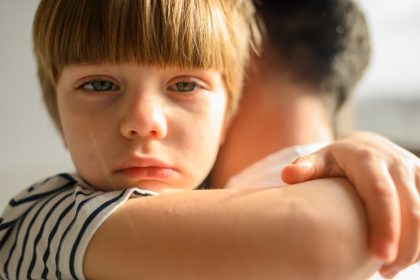Post-traumatic stress disorder (PTSD) and depression are two common mental health conditions that can affect anyone who has experienced a traumatic event.
Trauma can be defined as an event that involves actual or threatened death, serious injury, or sexual violence, or witnessing such an event.
Post-Traumatic Stress Disorder is a mental health condition that can develop in individuals who have experienced or witnessed a traumatic event.
PTSD is a psychiatric disorder that may occur in people who have experienced or witnessed a traumatic event, such as a natural disaster, combat, assault, accident, or other life-threatening events.
The impact of such an event can lead to persistent and distressing symptoms that affect various aspects of daily life.
Some examples of traumatic experiences that can lead to PTSD are:
- War or combat
- Natural disasters
- Terrorist attacks
- Violent crimes
- Sexual assault
- Domestic abuse
- Car accidents
- Life-threatening illnesses
Post-traumatic stress disorder is a disorder that occurs when a person has difficulty recovering from the trauma and experiences persistent and intrusive symptoms such as:
- Flashbacks or nightmares of the traumatic event
- Avoidance of reminders of the trauma
- Negative changes in mood and cognition
- Hyperarousal or increased alertness and reactivity
- Difficulty sleeping or concentrating
- Irritability or anger
- Guilt or shame
- Feeling detached or numb
Individuals with Post-traumatic stress disorder often experience symptoms grouped into four main categories:
- Intrusion
- Avoidance
- Negative alterations in cognition and mood
- Alterations in arousal and reactivity.
These symptoms can include flashbacks, nightmares, avoiding reminders of the trauma, negative thoughts, changes in mood, hyperarousal, and difficulty sleeping.
Post-traumatic stress disorder can affect anyone, regardless of age, gender, or background.
It is relatively common, with prevalence varying based on factors such as the nature of trauma and individual resilience.
Certain stimuli or reminders, known as triggers, can evoke intense emotional or physical reactions in individuals with PTSD, bringing back memories of the traumatic event.
PTSD often coexists with other mental health conditions, such as depression, anxiety disorders, and substance abuse. The presence of these comorbidities can complicate treatment.
Depression
Depression is a mood disorder that causes persistent feelings of sadness, hopelessness, and loss of interest in activities that were once enjoyable.
Depression can affect a person’s ability to function in daily life and can increase the risk of suicide.
Some of the symptoms of depression are:
- Low mood or emptiness
- Loss of interest or pleasure in hobbies or social activities
- Changes in appetite or weight
- Insomnia or hypersomnia
- Fatigue or lack of energy
- Feelings of worthlessness or guilt
- Difficulty thinking or making decisions
- Recurrent thoughts of death or suicide
How PTSD and Depression are Related?
PTSD and depression are often related because they share some common risk factors, such as genetic vulnerability, personality traits, and environmental stressors.
Moreover, experiencing a traumatic event can trigger or worsen depression, and having depression can make it harder to cope with trauma and recover from PTSD.
Therefore, it is not surprising that many people who have PTSD also suffer from depression.
In fact, studies have shown that up to 80% of people with PTSD have comorbid depression at some point in their lives.
The relationship between PTSD and depression can be complex and bidirectional, meaning that each condition can influence and exacerbate the other.
For example, a person who has PTSD may experience negative thoughts and emotions that can lead to depression, such as:
- Feeling hopeless about the future
- Blaming oneself for the trauma or its consequences
- Feeling isolated or alienated from others
- Losing trust or faith in oneself or others
- Feeling guilty or ashamed of having PTSD symptoms
On the other hand, a person who has depression may experience symptoms that can interfere with the treatment and recovery of PTSD, such as:
- Lack of motivation or interest in seeking help
- Difficulty engaging in therapy or following treatment recommendations
- Reduced ability to cope with stress or negative emotions
- Increased use of alcohol or drugs to self-medicate
- Increased suicidal ideation or behavior
Challenges of Diagnosing and Treating Individuals with Both PTSD and Depression
One of the challenges of diagnosing and treating individuals with both PTSD and depression is that the symptoms of these conditions can overlap and mask each other.
For example, both PTSD and depression can cause insomnia, fatigue, difficulty concentrating, and low mood.
Therefore, it can be hard to distinguish which condition is causing which symptom, and whether a person has one or both disorders.
Additionally, some of the symptoms of PTSD, such as avoidance and detachment, can make it difficult for a person to communicate their feelings and seek help.
Another challenge of diagnosing and treating individuals with both PTSD and depression is that these conditions can interact and influence each other in different ways, depending on the type, severity, and timing of the trauma and the onset of the depression.
For example, some people may develop depression before or after the trauma, while others may develop depression as a result of the trauma.
Some people may have chronic or recurrent depression, while others may have episodic or situational depression.
Some people may have mild or moderate depression, while others may have severe or major depression. These variations can affect the course, prognosis, and treatment response of both PTSD and depression.
Therapeutic Approaches and Interventions that are Effective for Individuals
The most effective therapeutic approaches and interventions for individuals experiencing both PTSD and depression are those that address both conditions simultaneously and comprehensively.
These include:
Cognitive-behavioral therapy (CBT): CBT is a type of psychotherapy that helps a person identify and challenge negative thoughts and beliefs that are related to the trauma and the depression, and replace them with more realistic and positive ones.
CBT also helps a person learn and practice coping skills and strategies to manage their symptoms and improve their functioning.
CBT can be delivered individually or in groups, and can be combined with other modalities, such as exposure therapy, cognitive processing therapy, or behavioral activation.
Eye movement desensitization and reprocessing (EMDR): EMDR is a type of psychotherapy that uses eye movements or other forms of bilateral stimulation to help a person process and reconsolidate the traumatic memories and reduce their emotional impact.
EMDR also helps a person enhance their positive beliefs and self-esteem, and reduce their negative emotions and behaviors.
EMDR can be effective for both PTSD and depression, as it can target both the trauma and the associated depressive symptoms.
Pharmacotherapy: Pharmacotherapy is the use of medication to treat the symptoms of PTSD and depression.
The most commonly used medications are antidepressants, such as selective serotonin reuptake inhibitors (SSRIs) or serotonin-norepinephrine reuptake inhibitors (SNRIs).
These medications can help regulate the mood, reduce anxiety, and improve sleep and appetite.
However, pharmacotherapy alone may not be sufficient to treat both PTSD and depression, and may have side effects or interactions with other drugs or substances.
Therefore, pharmacotherapy should be used in conjunction with psychotherapy, and under the supervision of a qualified medical professional.
Treatment Options
If you or someone you know is experiencing both PTSD and depression, you should know that there are effective treatment options available, and that you are not alone.
The first step is to seek professional help from a mental health provider who can assess your condition, provide a diagnosis, and recommend a treatment plan that suits your needs and preferences.
You can also find support from your family, friends, or other sources, such as online forums, support groups, or helplines.
The most important thing is to remember that recovery is possible, and that you deserve to heal and live a fulfilling life.
Conclusion
PTSD and depression are two common mental health conditions that can affect anyone who has experienced a traumatic event.
They are often related, as they share some common risk factors, and can trigger or worsen each other.
However, they can also be diagnosed and treated effectively, using therapeutic approaches and interventions that address both conditions simultaneously and comprehensively.
If you or someone you know is experiencing both PTSD and depression, you should seek professional help and support, and remember that recovery is possible.
FAQs
What is the connection between PTSD and depression?
PTSD and depression often coexist, with individuals who experience trauma and develop PTSD being at an increased risk of developing depressive symptoms.
The shared impact of trauma on mental well-being can contribute to the development of both conditions.
Can PTSD lead to depression?
Yes, experiencing a traumatic event that leads to PTSD can increase the risk of developing depression.
The chronic distress and emotional toll associated with PTSD may contribute to the onset of depressive symptoms.
How do the symptoms of PTSD and depression overlap?
There is considerable overlap in symptoms, including persistent sadness, changes in sleep patterns, difficulty concentrating, and a sense of emotional numbness.
Both conditions may also contribute to a negative impact on relationships and overall quality of life.
Are there specific traumas that increase the likelihood of both PTSD and depression?
While any traumatic event can contribute to PTSD and depression, studies indicate that interpersonal traumas such as physical assault or abuse may have a higher correlation with the development of both conditions.
Can treating PTSD alleviate depressive symptoms, and vice versa?
Treating PTSD may have a positive impact on depressive symptoms, and vice versa.
Comprehensive mental health interventions, including therapy and medication, aim to address both conditions concurrently, considering their interconnected nature.
How can individuals with both PTSD and depression find support?
Seeking professional help is crucial.
Mental health professionals can develop personalized treatment plans that address both conditions.
Support groups and connecting with others who have experienced similar challenges can also provide valuable support and understanding.





